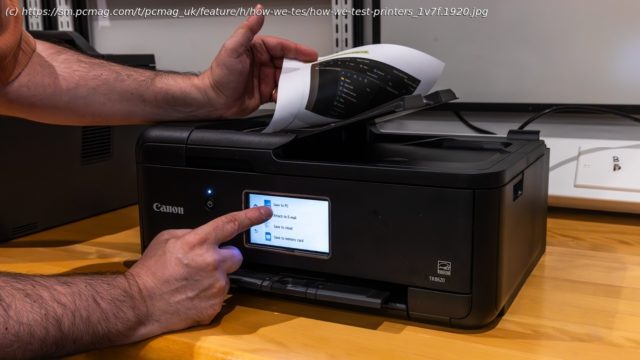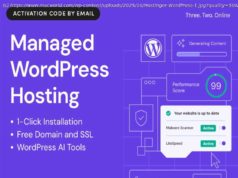Our lab tests measure overall performance, functionality, and output quality to help you pick the right printer for your needs.
Printers come in all sorts of varieties—all-in-ones! label printers! wide-format art printers!—and with a dizzying array of potential features. They can be focused primarily on printing text, graphics, or photos, or they might handle all three types of output reasonably well. They can be limited to letter- and legal-size paper, or any larger (or smaller) size you like. And a printer might „only“ print, or be a multifunction printer (MFP), also called an all-in-one (AIO), that also scans and copies.
And that’s just the basics. Other features can include sending and receiving emails or faxing via phone lines or through the cloud. Printing from cameras is another distinction, as is printing from and scanning to memory cards, USB keys, phones, and tablets. (How about even printing on old-school optical discs?)
Our testing takes all of these variations, and more, into account to cover every aspect of printer functionality, print quality, speed, and hardware and software usability.Our Suite of Tests
To thoroughly test every aspect of printing, we use two core sets of documents for every printer that can print them, plus additional sets for some specific types of printers. For example, for near-dedicated photo printers that can print at 17 inches, 19 inches, or even wider widths, we add appropriately sized photos, up to the maximum size the printer can handle and that the vendor has supplied paper for.
At the other extreme, dedicated label printers can’t print letter-size documents, so we use files consisting of nothing but address labels to test the ones that print paper labels, or a standard text phrase to test the ones that print label strips, typically on plastic media.
All tests are run using one of several printer testbed Windows systems, all of which have identical hardware and software. To ensure that the software environment is identical, we restore the disk image for each testbed from a master image as the first step in our tests before installing each printer.
The results provide a firm basis for comparison between printers as appropriate. Even though we can’t print a letter-size business document on a dedicated 4-by-6-inch photo printer, for example, we can print 4-by-6-inch photos on almost any printer, which lets us compare speeds and quality over the entire range from small-format photo printer to desktop inkjet, laser, and professional-level wide-carriage photo printer.
Our business suite of test documents includes documents created in and printed from Adobe Acrobat and Microsoft Word, Excel, and PowerPoint. Some have only text or only business graphics. Others mix text with embedded charts and photos. All output is on the same brand and type of 20-pound-weight plain paper for all printers, and all images are printed in default mode in simplex (one-sided). For printers with auto duplexing (two-sided printing), we also print the Word file in duplex.
Our photo suite includes 300dpi-resolution photographs in two sizes: 4 by 6 inches and 8.5 by 11 inches. We use nine color photos and one 8.5-by-11-inch monochrome photo. The color images are chosen to include skin tones, a wide range of shading from dark to light in a single image, and „memory colors.“ (The latter are real-world colors that people tend to remember and know what they should look like, such as grass green, sky blue, and flesh tones.)
For photo printing, we use the paper the vendor recommends; if there is no vendor recommendation, we use the same high-quality 24-pound color copier paper for all lasers or the same generic photo paper for all inkjets.






